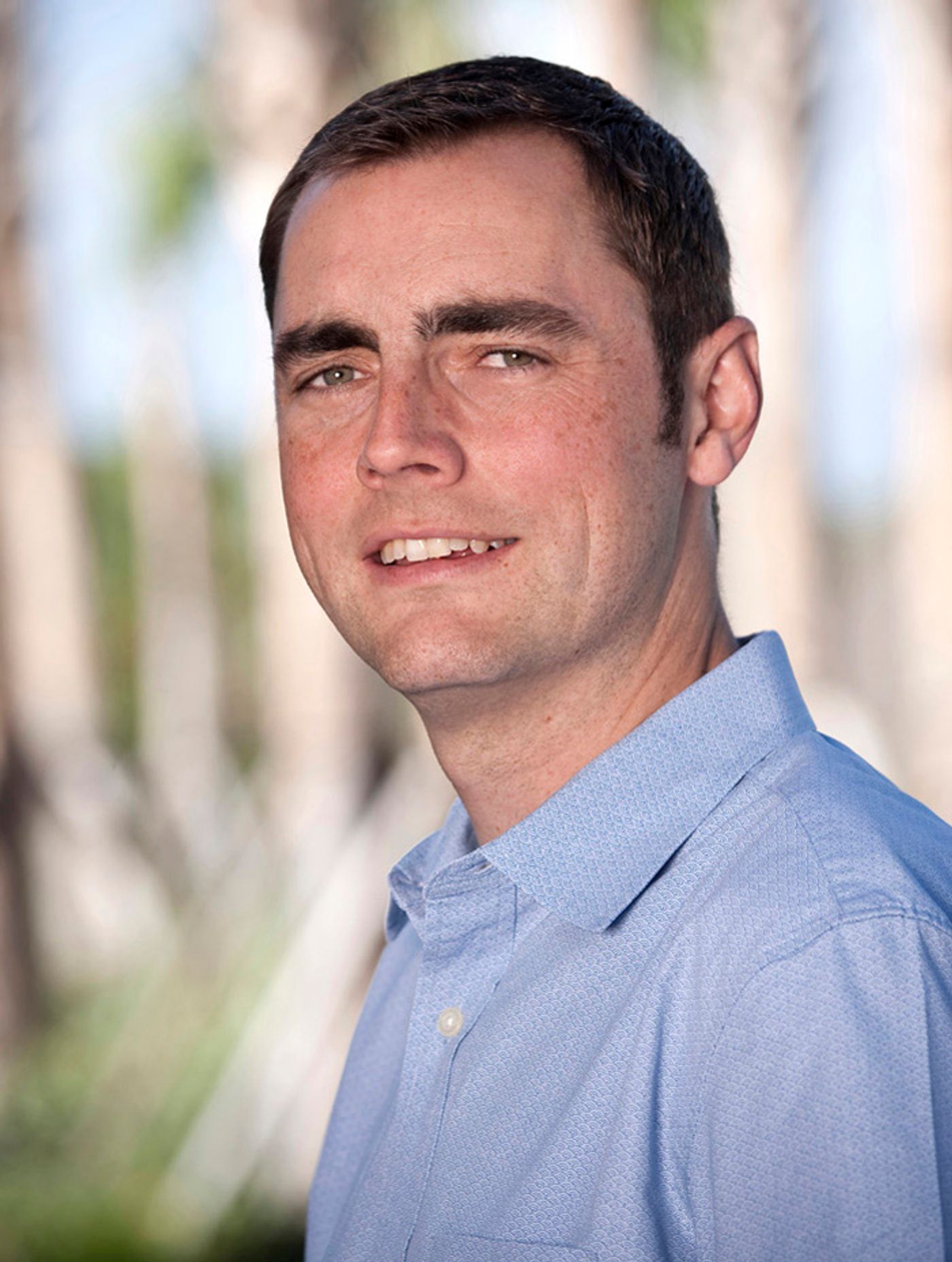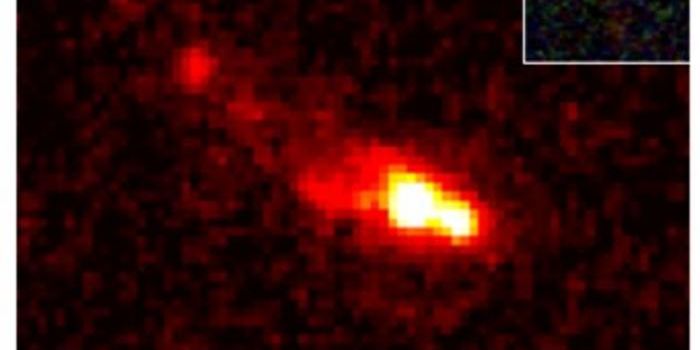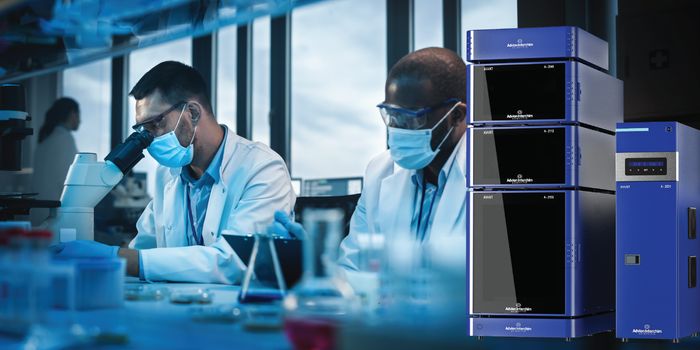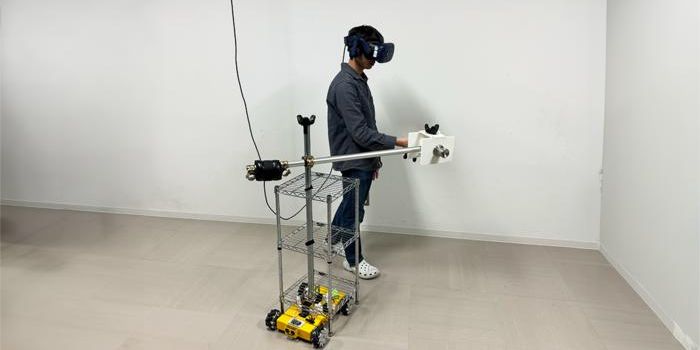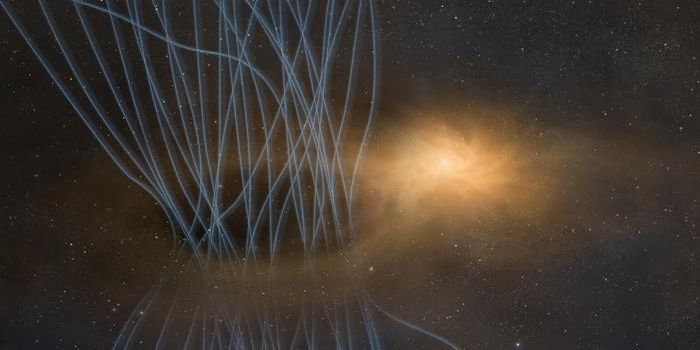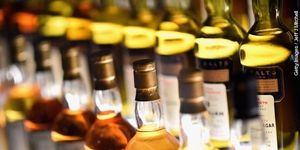Screening large “libraries” of compounds to find those with a desired biological activity is a powerful method for discovering new drugs, but requires a large, expensive and dedicated facility. Now, scientists at the Florida campus of The Scripps Research Institute (TSRI) have devised the central component of a screening system that would be orders of magnitude smaller and cheaper.
“We’ve developed a device that can do the functional equivalent of high-throughput compound screening on an ultra-miniaturized scale,” said the study’s principal investigator Brian M. Paegel, an associate professor at TSRI.
The advance, published recently online ahead of print in
Analytical Chemistry, follows a previous study from the Paegel laboratory in
ACS Combinatorial Science that described the synthesis of miniaturized DNA-encoded compound libraries. The new screening device is designed to work with the new type of library.
One-Bead, One-Compound
Current high-throughput screening systems typically occupy 10,000 square feet of space or more and cost millions of dollars. They rely heavily on robotic devices that retrieve compounds from the library, place each compound into a separate small well in an “assay microplate” and measure each compound’s biological activity—for example, whether the compound inhibits a particular enzyme involved in viral replication.
Being almost entirely automated and relatively quick, such systems can rapidly screen the tens or hundreds of thousands of compounds in a typical library. But the great cost of these high-throughput screening systems limits their use to locations at pharmaceutical companies and large research institutions. The Scripps Florida campus houses one of the most active high-throughput screening facilities outside the pharmaceutical industry.
The new approach starts with the use of “one-bead-one-compound” (OBOC) libraries, in which individual compounds are chemically attached to microscopic beads. Over the past two decades, many laboratories have begun to work with OBOC libraries of one type or another, which are so quickly and cheaply prepared and are so compact that such libraries are essentially laboratory consumables. “It is possible to generate an OBOC library of millions of compounds in a week for about $500,” said Alexander K. Price, a senior research associate in the Paegel laboratory and lead author of the new study.
LIGHTSABR
There are considerable technical challenges involved in putting bead-borne compounds through miniature screening devices. But, as they report in their new paper, Paegel and Price were able to engineer a benchtop-scale device that meets these challenges and can screen OBOC libraries.
The device is built on the microfluidics principles that also underlie inkjet printer technology. Using a “suspension hopper,” which Paegel and Price described in a 2014
Analytical Chemistry paper, the device introduces OBOC library beads into tiny liquid droplets that contain the assay of interest, such as an enzymatic activity assay. The volume of these assay droplets is about 100,000 times less than the volumes used for high-throughput screening assays.
The device then frees each compound from its bead with a photochemical reaction induced by ultraviolet (UV) light and, after an appropriate period of incubation, records the result in each droplet.
Dubbed LIGHTSABR (Light-Induced and Graduated High-Throughput Screening After Bead Release) for its light-based cleavage of compounds from their carrier beads, the device overcomes significant technical hurdles concerning the smooth flow of droplets, the absorption of stray UV irradiation and calibration of the UV waveguide.
A key innovation is that the technique allows users to vary the UV illumination to adjust the amount of a compound cleaved from its bead—and thus adjust the dose of the compound being tested. The team successfully demonstrated this dosing function using an assay designed to find inhibitors of HIV-1 protease, a key enzyme involved in the replication of the virus that causes AIDS.
The next step for Paegel and Price is to apply the microfluidic LIGHTSABR and the laboratory’s DNA-encoded OBOC libraries. “In addition to antiviral compounds, we are also pursuing new antibiotics and other drug classes that address the emergence of resistance in rapidly evolving pathogens,” said Paegel.
“Hundreds of laboratories around the world could operate their own miniaturized screening facilities, using their own assays to go after targets that are of most interest to them,” said Price.
In addition to Paegel and Price, the study, “hνSABR: Photochemical Dose-Response Bead Screening in Droplets,” was authored by Andrew B. MacConnell of TSRI.
Funding for the research was provided by a Director’s New Innovator Award from the National Institutes of Health (OD008535) and the Defense Advanced Research Projects Agency (N66001-14-2-4057). To view the paper, see
https://pubs.acs.org/doi/abs/10.1021/acs.analchem.5b04811
_________
FOR MORE INFORMATION
Brian Paegel Biosketch
The Paegel Lab
Analytical Chemistry paper
This article was originally published on
scripps.edu.
